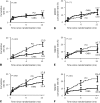Chronic coronary artery disease: diagnosis and management
- PMID: 19955250
- PMCID: PMC2787400
- DOI: 10.4065/mcp.2009.0391
Chronic coronary artery disease: diagnosis and management
Abstract
Coronary artery disease (CAD) is the single most common cause of death in the developed world, responsible for about 1 in every 5 deaths. The morbidity, mortality, and socioeconomic importance of this disease make timely accurate diagnosis and cost-effective management of CAD of the utmost importance. This comprehensive review of the literature highlights key elements in the diagnosis, risk stratification, and management strategies of patients with chronic CAD. Relevant articles were identified by searching the PubMed database for the following terms: chronic coronary artery disease or stable angina. Novel imaging modalities, pharmacological treatment, and invasive (percutaneous and surgical) interventions have revolutionized the current treatment of patients with chronic CAD. Medical treatment remains the cornerstone of management, but revascularization continues to play an important role. In the current economic climate and with health care reform very much on the horizon, the issue of appropriate use of revascularization is important, and the indications for revascularization, in addition to the relative benefits and risks of a percutaneous vs a surgical approach, are discussed.
Figures






References
-
- Lloyd-Jones D, Adams R, Carnethon M, et al. American Heart Association Statistics Committee and Stroke Statistics Subcommittee Heart disease and stroke statistics--2009 update: a report from the American Heart Association Statistics Committee and Stroke Statistics Subcommittee [published correction appears in Circulation. 2009;119(3):e182] Circulation 2009;119(3):480-486 - PubMed
-
- Omran AR. Changing patterns of health and disease during the process of national development. In: Albrecht GL, Higgins PC, eds. Health, Illness and Medicine: A Reader in Medical Sociology Chicago, IL: Rand McNally; 1979.
-
- Reddy KS. Cardiovascular disease in non-Western countries. N Engl J Med. 2004;350(24):2438-2440 - PubMed
-
- World Health Organization Preventing chronic disease: a vital investment: WHO global report Geneva, Switzerland: World Health Organization; 2005. http://www.who.int/chp/chronic_disease_report/en/ Accessed September 17, 2009
-
- Leeder SR, Raymond S, Greenberg H. A Race Against Time: The Challenge of Cardiovascular Disease in Developing Economies Sidney, Australia: Earth Institute at Columbia University; 2004. http://www.earth.columbia.edu/news/2004/images/raceagainsttime_FINAL_051... Accessed September 17, 2009
Publication types
MeSH terms
LinkOut - more resources
Full Text Sources
Miscellaneous

